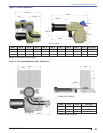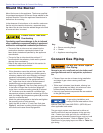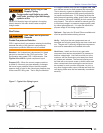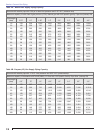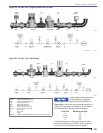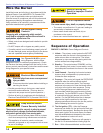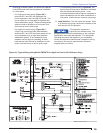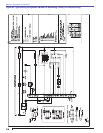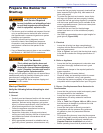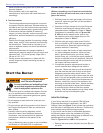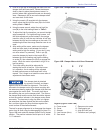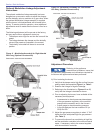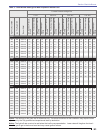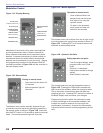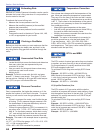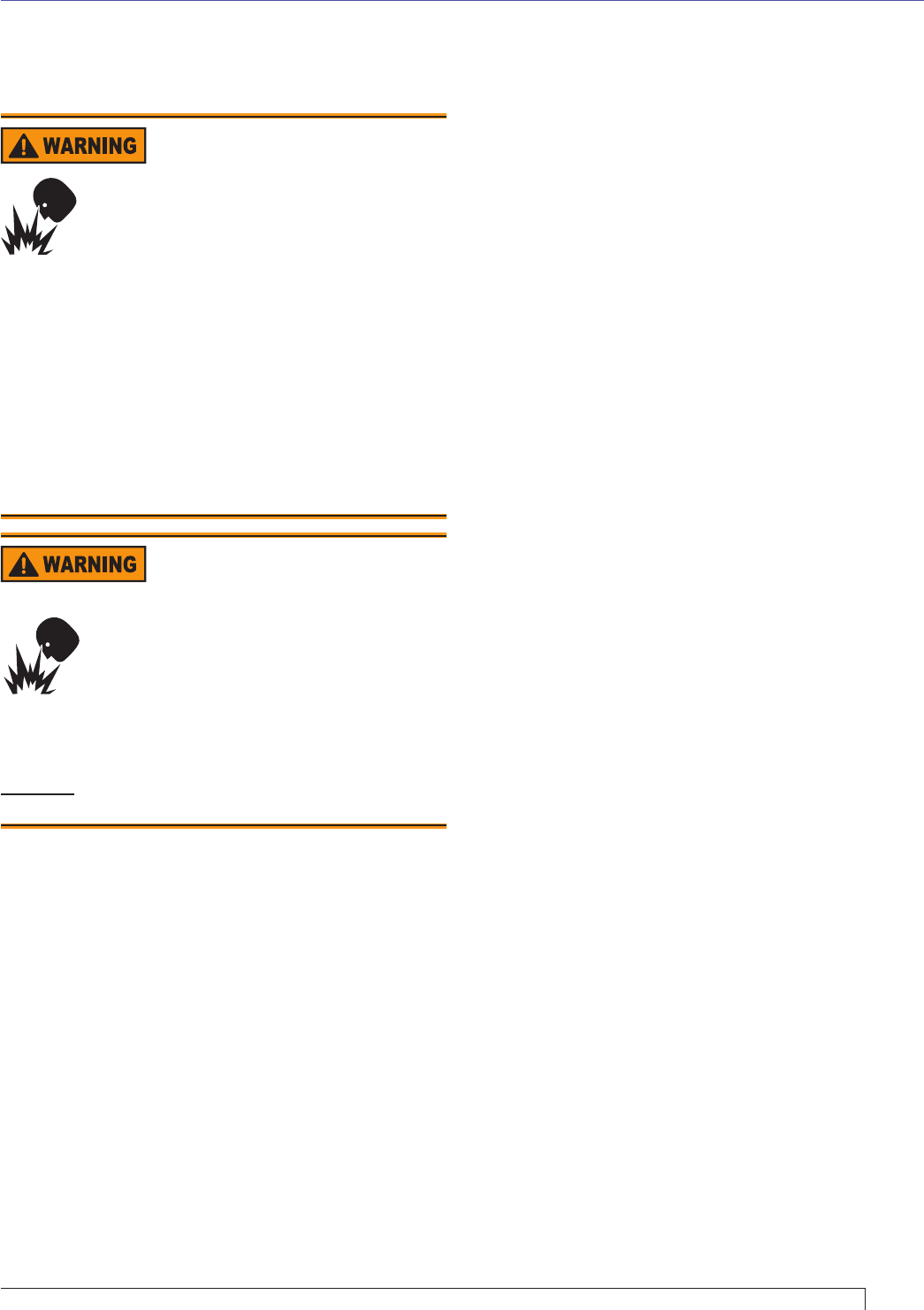
17
CG15, CG25, CG50 Burner Manual
Prepare the Burner for
Start-up
Start-up Checklist
Verify the following before attempting to start
the burner.
1. General
Carefully read and become familiar with the manual,
fl ame safeguard control instructions, sequence of
operation, pertinent wiring diagrams, gas system
layout, insurance requirements, other controls and
valve literature pertinent to the installation.
Follow the appliance manufacturer’s start-up
procedures (when available).
Inspect the combustion air supply and exhaust
venting and verify that they are free of obstructions
and installed and sized in accordance with all
applicable codes.
Notify appropriate personnel to schedule start-up
(gas utility, owner, operators, subcontractors, etc.).
○
○
○
○
2. Gas Supply Piping
Insure that the gas piping is properly sized and has
been inspected by the gas utility, leak tested at all
joints, and purged.
To protect the gas train and controls, insure that a
drip leg or dirt pocket has been properly installed.
Insure that the fuel gas being supplied is compatible
with the burner specifi cation and is available at the
correct regulated pressure. (See burner name plate
and specifi cation sheets).
Insure that the vent lines for the diaphragm
valves have been run to the outside and properly
terminated.
Use RWB recommended maximum pipe lengths for
good light-off (Figure 8A/B).
3. Electrical
Insure that all wiring has been completed and
complies with the National Electric Code NFPA 70
and local requirements.
Refer to Figure 1 and verify that the electrical supply
to the burner matches the voltage specifi cation on
the label.
4. Boiler or Appliance
Insure that the fl ue passages and combustion area
have been thoroughly cleaned and are in good
condition.
Set the breech damper to the required position for
system operation.
Fill the appliance with water (boilers).
Check all safety and operating controls for correct
application, installation, wiring, and operation.
Insure that the maximum capacity of the appliance is
compatible with the specifi ed burner input fi ring rate.
5. Burner - See Replacement Parts Illustration for
Familiarization
Insure that the gas burner model and capacity meet
the requirements for the installation.
Insure that the gas train meets operating
specifi cations, all safety codes and insurance
requirements.
Refer to Table 3 and Figures 10A and 10B to insure
that the burner air damper is positioned for initial
start-up preliminary settings.
Insure that the burner is securely mounted in
the appliance with the pressure fi ring plate and
all gaskets in place for pressurized chamber
applications.
For propane-fi ring burners, insure that the propane
restrictor has been correctly selected for your burner
model (see Table 4) and properly installed (see
Propane Restrictor Installation instructions).
Before operating insure that all protective cover
○
○
○
○
○
○
○
○
○
○
○
○
○
○
○
○
○
○
Section: Prepare the Burner for Start-up
Professional Installation
and Service Required
Incorrect installation and mishandling of start-
up could lead to equipment malfunction and
result in asphyxiation, explosion or fi re.
This burner must be installed and prepared for start-
up by a qualifi ed service technician who is trained
and experienced in commercial gas burner system
installation and operation.
Carefully follow the wiring diagrams, control
instruction sheets, fl ame safeguard sequence
of operation, test procedures and all appliance
manufacturer’s directions that pertain to this
installation.
If any of these items are not clear or are unavailable,
call Beckett at 1-800-645-2876 for assistance.
y
y
y
Delayed Ignition, Explosion
and Fire Hazards
This is a direct spark ignition burner and
by code requirements must have a primary
control with a 4-second fl ame establishment
period. Exceeding 4 seconds could result in
delayed ignition, explosions and fi re.
Always verify the primary control has a 4-second fl ame
establishment period by carefully following the control
manufacturers’ confi guration instructions.
Example: Honeywell RM Series requires clipping and
removing the JR1 resistor.



